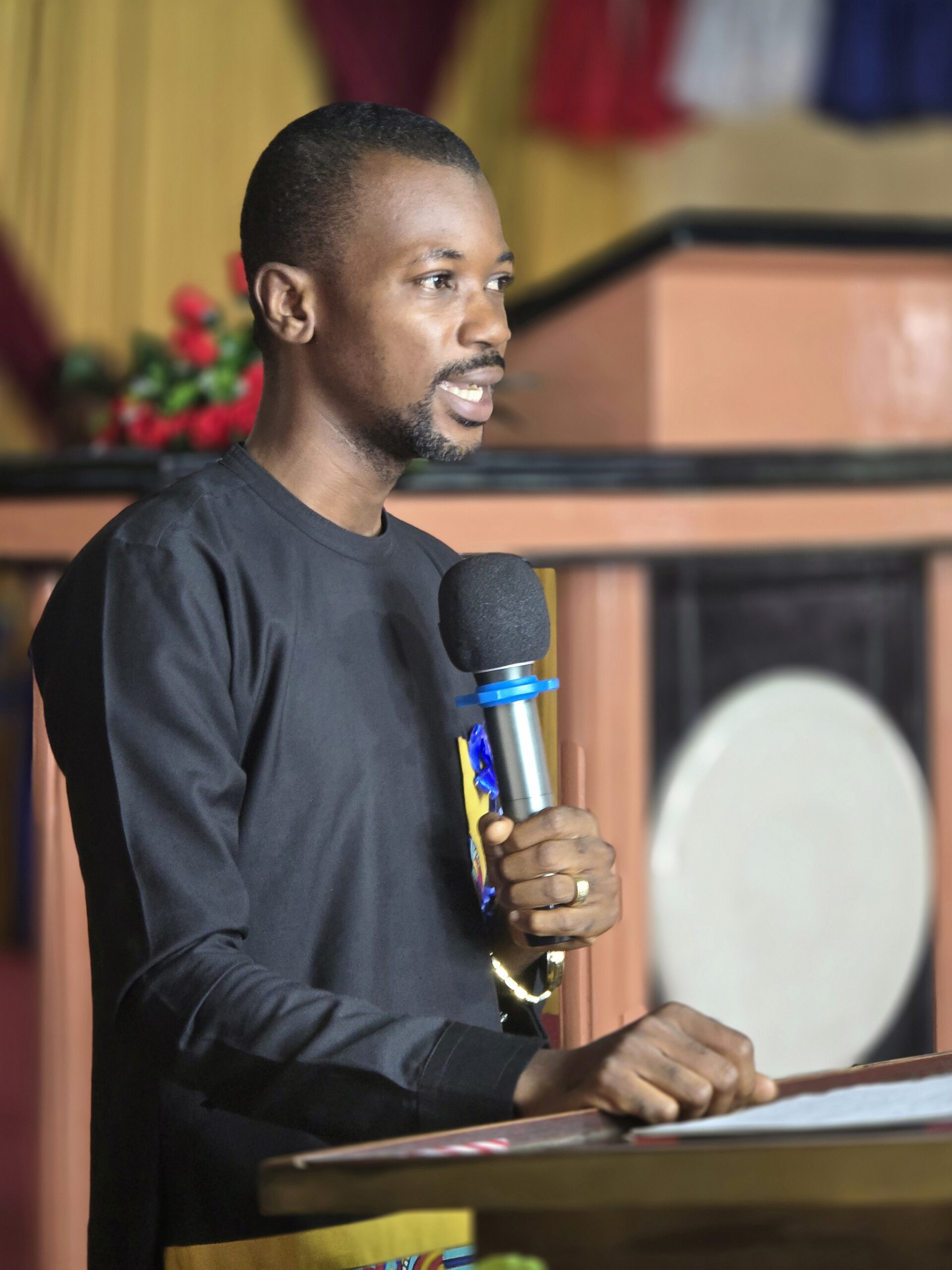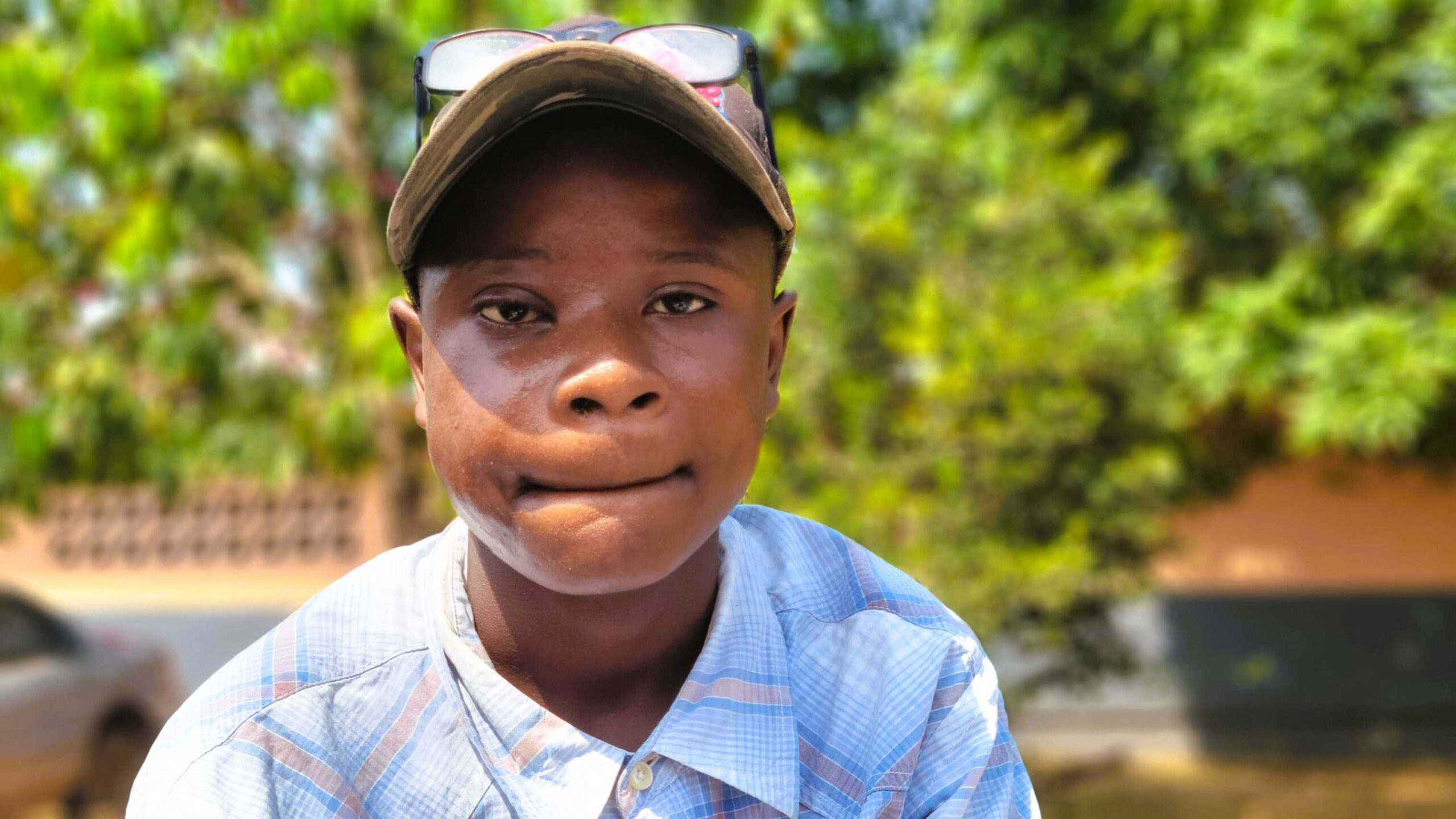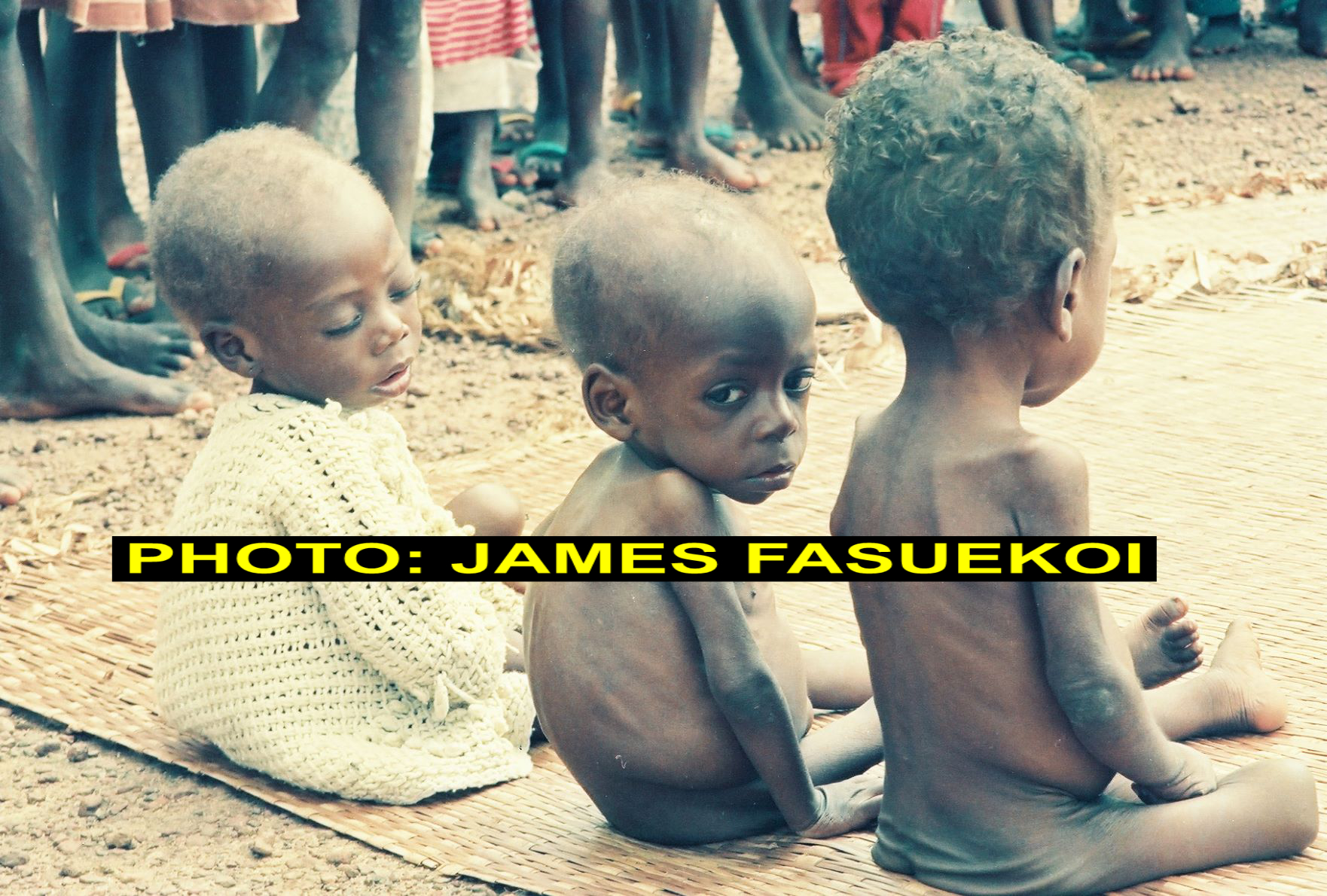GRAPHIC!!! Viktor Bout: the elusive death merchant! Why do immigrant Africans fear of his return to West Africa?

Leviticus 24:17 “ANYONE WHO TAKES THE LIFE OF A HUMAN BEING IS TO BE PUT TO DEATH”
“I took my shoes off, took my shirt off and was about to unzip my pants”-Journalist and ex-Liberian TRC commissioner, Massa Washington arrested along with a colleague in the former Taylor’s “Greater Liberia.
It had taken about an hour of intense discussions at a local hotel in Minneapolis and U.S. federal lawyers, detectives, didn’t seem to be getting closer to achieving their goal: they needed my consent to stand as a federal witness in a war crimes trial in Philadelphia-a trial that would go down into history-for which the team had flown from Pennsylvania to Minnesota.
All this effort pointed to one man, Mohammed Jabbateh, a native of Liberia from West Africa. Prior to coming to the U.S. Jabbateh had served as a commander with the notorious ULIMO-K rebel faction during Liberia’s first civil war. Apart from egregious human rights abuse-charges he faced; the US high court also accused him of committing immigration fraud.

Now, a team composed of federal lawyers and agents from the FBI and Department of Homeland Security, sought me to go for trial, because of my extensive work on the Liberian civil war as a former war-photographer and news correspondent. My journalistic work had turned me into a potential witness in a pending international war crimes trial which soon turned into a media frenzy: United States of America vs. Mohammed Jabbateh.
US Att. Thayer quotes from my book
As I persistently held onto my “ground” and refused the team’s plea, one of the DoJ’s trial lawyers, Attorney S.T. Thayer conceived another idea. He opened the massacre page of my book (cited below), read aloud the photo inscription of perhaps, the youngest of the 600 victims in the June 6, 1993 Carter Camp genocide:

“MARKS OF TERRORISM: What other description could best fit the killers of these innocent people, especially the child (in left photo) other than a terrorist? Do the living have a responsibility to stop this sort of cruelty against innocent women and children? YES!”
After he had finished reading the above highlighted caption (attached to this murdered child picture in the book), Thayer asked me pointedly: “Mr. Fasuekoi, whose work is this?” as he waved the blue book in the air. “It is my work,” I replied hesitantly.
I broke down in tears, banged the table before me, after being overcome by a burst of indignation-out of empathy and a sense of guilt-seeing the photo of this poor little soul, stabbed to death. And I wondered if “the Living” had done more to bring the heinous killers of Carter Camp, plus other massacres to justice.
Detectives quickly rushed to my side and consoled but my weeping continued profusely. A detective assisted me with napkins, while another rubbed my shoulders, assuring: “It’s okay, Mr. Fasuekoi.”
How Bout’s arms deal fueled Genocides in Liberia
The Carter Camp genocide (also called the “Firestone Harbel Massacre”), was no doubt the work of the “NPFL.” The front had occupied that region for over 3 years before being driven out by the peacekeeping soldiers in late 1992.

However, Bout, the “merchant of death” played a major character in the NPFL war business by supplying bulks of the front’s weapons, used to carry out such massacres as the Carter Camp and Barkedu massacre in Lofa. Viktor Bout’s “partners in crimes” (NPFL), in 1992, stormed the Barnesville home of five American Nuns, slaughtered them, then looted their home, and set the sisters’ car on fire. The front also massacred six Senegalese Peacekeeping soldiers in Vahun, Lofa County.
Without his shady deals which put guns into the hands of “bad guys,” it would have been near impossible for the NPFL rebels to commit massacres on such large scales that resulted in over 600 civilian deaths in Carter Camp alone, and 300 in Barkedu, largely women and children.

Although every investigative account pointed to the NPFL as the “culprit”, yet, a UN human rights team dubbed as the “WACO Commision” dispatched to Liberia to probe the massacre blamed it on the Armed Forces of Liberia (AFL). It would take The Liberian Truth and Reconciliation Commission (TRC), during its proceedings, to officially name the NPFL as the group responsible for the Carter Camp massacre following the Commission’s Hearings in Margibi County, where several eyewitnesses and direct victims of the massacre, testified and confirmed how marauding rebels of the NPFL, stormed Carter Camp late at night – early hours of the morning and committed the massacre. Adding to the authenticity of the TRC’s finding, was the fact that one of the TRC Commissioner’s, Journalist, Massa Washington, reported on the massacre and was the one who broke the story of the Carter Camp massacre, as the first journalist on the scene along with Photojournalist, James Momoh of the Inquirer Newspaper at the time.

The WACO Commission’s blunder raised questions about its own integrity within the international community, further making it become a laughing-stock particularly among some top U.S. criminal justice lawyers.
And like his criminal partner Viktor Bout, Taylor’s “modus operandi” defied every logic and rules of “engagement” as well as humanitarian laws that govern conflicts or wars. Children aged 7-15 were forcibly conscripted by his army while his children plus those of Tom Woewiyu enjoyed life in the U.S. and went to school freely.

The repressive NPFL pushed hundreds of innocent kids (child soldiers), that it re-named “Small Boys Unit” or “SBU” into battle with little or no preparation. Scores of the child soldiers captured by ECOMOG from the frontlines were encamped and received fair treatment, food and clothing before they were sent to their parents.
Hundreds of their counterparts that refused to surrender to peacekeepers, especially during the dreadful 1992 “Operation Octopus” apparently for fear of reprisal, died fighting. ECOMOG soldiers, who said they left children home at the kids’ age sometimes teared up, witnessing such scenes.

By the time the war ended in 2003, Liberia had lost an estimated 250, 000 to 300,000 people including foreign nationals. It is safe to surmise that much of these losses became possible through the help of someone like Viktor Bout who facilitated NPFL with weapons of war.
Perhaps the world’s most dangerous and elusive arms smuggler, Bout was exchanged with the U.S. WNBA Star Brittney Griner recently in what seemed a hasty prisoner exchange deal between the United States and Russia. He gained notoriety dealing in illegal arms trafficking for decades.
Years earlier, he had been arrested by U.S. agents overseas and brought to America to face justice for reportedly “aspiring” to murder Americans. According to some reports, he once served as a Soviet weapon manufacturer and a Russian agent.
He was sentenced to 25 years imprisonment after his conviction and only served about a half of the sentence before he was released.
His network managed to beat every UN arms ban, selling guns and explosives to rebel guerrillas wherever there was a conflict or war. Truth and Reconciliation Commission of Liberia (TRC), cited him multiple times in its final report and requested further probe into his arms deals with Liberia, said Massa Washington, ex-TRC commissioner.
His arms trafficking business boomed at the height of Liberia’s first civil war and through the second 1989-2003. The repressive NPFL awarded him an unspecified amount in mineral resources such as “bloody” gold, diamonds, timbers, etc., in exchange for weapons according to news sources.
“Viktor Bout was a household name in Greater Liberia,” said James Momoh, a New Jersey resident, and a former BBC stringer and freelance photographer who initially worked for The Inquirer of Liberia.
Momoh, like scores of reporters, lived in Monrovia during the first war era and frequented the NPFL controlled area enduring dangerous risks, writing for his paper, at times encountering hostile NPFL reporters who referred to him and others as “Monrovia based journalists.”
Bout’s beneficiaries (NPFL) also executed, tortured journalists
In August 1990, Taylor’s rebel forces kidnapped two prominent Nigerian journalists, Tayo Awotunsin and Krees Imobibie of the Guardian and Champion Newspapers. Both had gone to Liberia to cover the arrival of ECOMOG soldiers. It was a clear manifestation that the front wasn’t a friend of journalists.
Many believe that the NPFL’s action was Taylor’s retaliation against Nigeria for participation in, and leading the multinational peacekeeping force, ECOMOG to Liberia to enforce stability and peace.
Both Tayo Awotunsin and Krees Imobibie are said to have been first moved to the coastal city of Buchanan, Grand Bassa, and later to Gbarnga, NPFL’s stronghold at the time on Taylor’s instance.
A nurse from the United States of America, Marie Vah, who had traveled to Liberia along with a female friend, during the war to search for their relatives, confirmed before Liberian TRC Commissioners in Minnesota at the TRC Diaspora Hearings around 2009, that she and her friend were arrested by NPFL rebels accused of being spies from the U.S., and placed in the same jail cell in Gbarnga, where the two Nigerian reporters had been detained. Mrs. Marie Vah told the TRC that the two journalists were repeatedly flogged and eventually died in prison. They died of “starvation” because they were denied meals.
The NPFL spokesman Tom Woewiyu later confirmed that the two foreign journalists died by “starvation” while they were in their rebel custody.

Years later into the war, Correspondent James Momoh and Journalist Massa Washington (later, TRC Commissioner) both had a near-death experience in Taylor’s Gbarnga one afternoon, as they tried to get to a friend living in the same community housing Taylor’s “mansion” who had invited both for a lunch.
According to Momoh, some of Taylor’s guards had them arrested, with their shoes and camera seized, and demanded both at gunpoint to “undress” themselves while threatening to execute them in broad daylight along a dusty road behind the “Taylor’s mansion.”
“Those guys [NPFL rebels] were very serious and wanted to kill us,” Momoh told Global Ekklesia Sunday in an interview.
Massa Washington, a former TRC Commissioner who covered the civil war for The Inquirer, recounted a graphic picture of what happened on that fateful day in 1994-95.
“They [NPFL] rebels came running from the direction of Taylor’s Mansion in Gbarnga, and arrested James Momoh and myself while we were walking on the dirt road behind Taylors’s Mansion going to a friend’s place. They shouted and demanded that we remove our clothes. James had removed his shirt, belt, shoes and asked me to do the same…I also removed my shoes, and shirt.”
A human and women’s rights reporter, Massa seemed to understand more the danger of quickly giving into rebel “demands” in the face of an imminent threat so she tried as much to stay talkative, delaying, negotiating, buying time in hope a rescuer may come by.
“I kept telling them, ‘your say Greater Liberia is free, how come you people are doing this to us?’ If Greater Liberia is free, how come we are being arrested because we are from Monrovia? I just kept on challenging them while taking off my clothes very slowly.”
“I kept talking and won’t stop. He [James] kept telling me to stop talking. James was so angry with me and said I wanted to get us killed,” she recalled.
“I took my shoes off, took my shirt off and was about to unzip my pants,” she went on.
As the sound of an approaching SUV increased, she quickly peeped through the narrow door of the guard post and thought that could be their last chance at survival.
The rebels, she explained, yielded to her, and ordered that she move away from the door and walk back to them.
“At that instant, I just ran outside without a shirt and shoes, and stood in front of the gate before the Nissan Patrol SUV,” she told this news magazine.

A top Taylor-NPFL journalist, the late Victoria Christopher-Cooper, was traveling in the SUV-, she jumped out quickly and yelled out Massa’s name and asked, “what is happening?”
Amidst the noises, James Momoh also took his chance and ran out of rebel custody “also bare-footed, without a shirt,” said Massa.
Asked by journalist, Mrs. Victoria Christopher-Cooper to explain why they arrested both journalists, the NPFL guards “lied” according to Massa, alleging that James Momoh had tried to “take pictures” and so they suspected them to be “spies” and thus decided to arrest them.
NPFL-RUF/Bout Sierra Leone connection
With the invasion of Sierra Leone in early 1991, Bout’s arms sale exploded, with the opening of a new frontier. Journalists, relief workers, plus locals who traveled between Gbarnga, Zorzor, Voinjama and Vahum Districts, confirmed the continual flow of arms and ammunitions from NPFL to RUF guerrillas fighting in Sierra Leone.
Bout’s arms shipment to RUF rebels with Taylor/NPFL working as “facilitator” continued uninterrupted through these major north-western routes in Bong and Lofa Counties even after Taylor became president of the Republic of Liberia 1997.
A University of Liberia student, once stationed in Zorzor region, where he worked with cocoa-coffee farmers, revealed that a fleet of NPFL vehicles used to do arms shipment via this ideal route, often passed Zorzor in the dead of night, reaching the Mendekoma-Sierra Leone border town before daybreaks.
RUF too, rarely went face to face with a rival force in battle. At best it’s rebels didn’t care to differentiate between civilians and a military target. In fact the front gained notoriety for systematically hacking off limbs of civilians, including even toddlers. Such cruelty went far to terrify the entire population of the country.
During their more than a decade reign of terror, the front succeeded in killing more local and foreign journalists (using Bout’s own “arms and explosives” shipped) than in any past war in the West African region.

The Committee to Protect Journalists (CPJ), for instance, recorded at least 15 journalists killed in Sierra Leone by the RUF just between 1997-2000. Of this figure, CPJ said the RUF “deliberately targeted” 13, killing them.
On January 11, 1999, RUF rebels again ambushed a group of foreign reporters and photographers on press assignment inside Freetown, killing several while some escaped but with life-threatening injuries.
One of the victims, 34-year-old Myles Tierney, The Associated Press East Africa AP Television news producer wasn’t so lucky; he died instantly. AP’s West Africa Bureau Chief, Ian Stewart, 32, a Canadian, suffered “life-threatening” wounds to the head, while AP West Africa Bureau chief photographer, David Guttenfelder received minor cuts on his body, according to the AP.
In late May 2000, the CNN also reported the bloody murders of several foreign war correspondents by RUF rebels after they ambushed the journalists’ vehicle in Sierra Leone. Reuters veteran war reporter, Kurt Schork and seasoned AP Television news producer, Miguel Moreno were among the dead.
Schork, according to Wire reports, had previously covered the Gulf and Yugoslavia wars while Miguel reported and filmed the Kosovo, Chechnya and Iraq wars, and still survived.
Fear abounds Bout may return to West Africa
In 2012, Viktor Bout “prophesied” his own release from U.S. prison when he was interviewed by U.S. journalist Nick Schmiddle. Nick occasionally sought Bout’s views in prison regarding a possible prisoner swap.
“They [referring to the US,] will try to lock me up for life, but I will get back to Russia,” Nick, who spoke with NPR recently, remembered him bragging.
Bout’s “prophecy” came to pass a few weeks ago after the U.S. Government aborted his 25-year-jail sentence and set him free in order to secure the freedom of an American.
The hasty “deal,” as described by some people, also left many immigrant Africans, including journalists from Liberia-one of the nations greatly affected by his illegal arms deals-perplexed.
In fact, it was quite easy for one to trace “fear” in the voice of Massa Washington when she spoke with BBC and US-based NPR as they discussed a possible return of the “Death Merchant” mainly to Liberia, now a paradise for arms and drugs trafficking where some of Viktor Bout’s old business partners remain active in the government and roam about freely.
The Truth and Reconciliation Commission was set up to probe atrocities of the wars. Massa and co-commissioners investigated war-genocides, plus “illicit” activities associated with the wars, and thus stumbled upon Bout’s extensive network of arms deals to NPFL and RUF.
Like Journalists Massa and Nick, Photojournalist James Momoh too, seems disappointed about the swap, and thinks that Russia benefited more from the deal perhaps than the US, considering Viktor Bout’s criminal character and the destruction he unleashed upon the continent through such illegal arms deals.
But as James Momoh puts it, America would do anything to secure the freedom of its citizens because, he added, their citizens “come first, above everything else…” and people ought to understand that by now.
WARNINGS: NOTE ALL PHOTOGRAPHS ARE COPYRIGHTED BY AUTHOR AND SOURCES LISTED.











